4. LUO CULTURE
4.1 CEREMONIES
Luo cultural practices in the past often revolved around ceremonies. The two most important ceremonies were marriage and funeral. Elaborate funeral ceremonies involved driving cattle to the deceased person's home before the burial and then afterwards symbolically driving death away ( tero buru ).
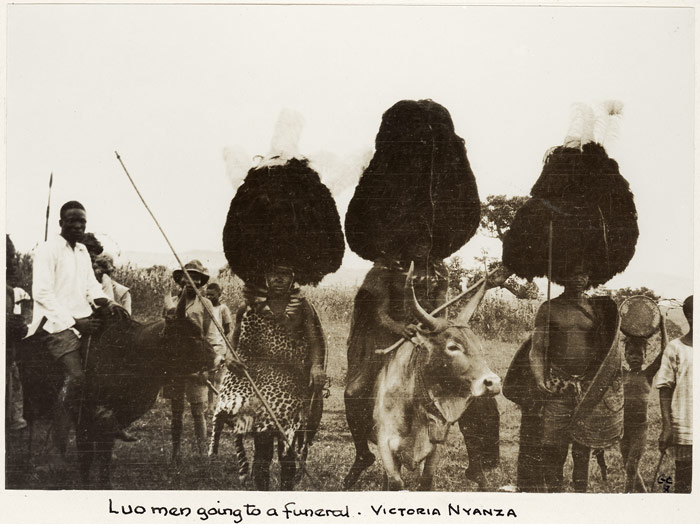
1998.206.6.3
Luo men going to a funeral riding oxen and adorned
in funeral gear including spears and leopard skin
George R. Carline, 1929
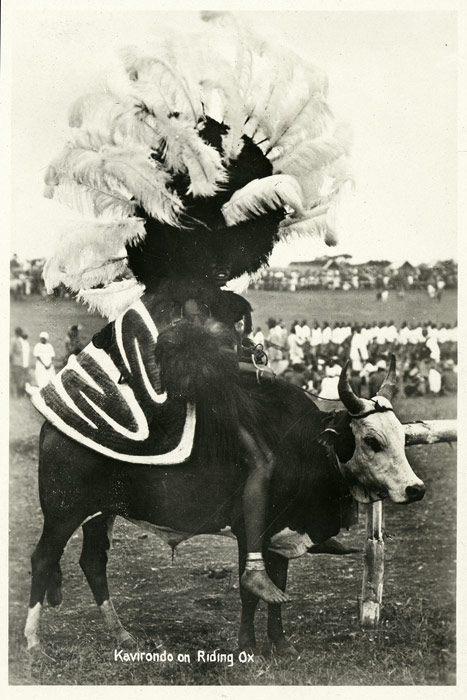
1998.204.14.29
Luo man going to a funeral riding an ox, carrying
a shield (okumba ), and wearing a headdress
covered in ostrich feathers (kondo udo )
Missioni della Consolata, about 1920
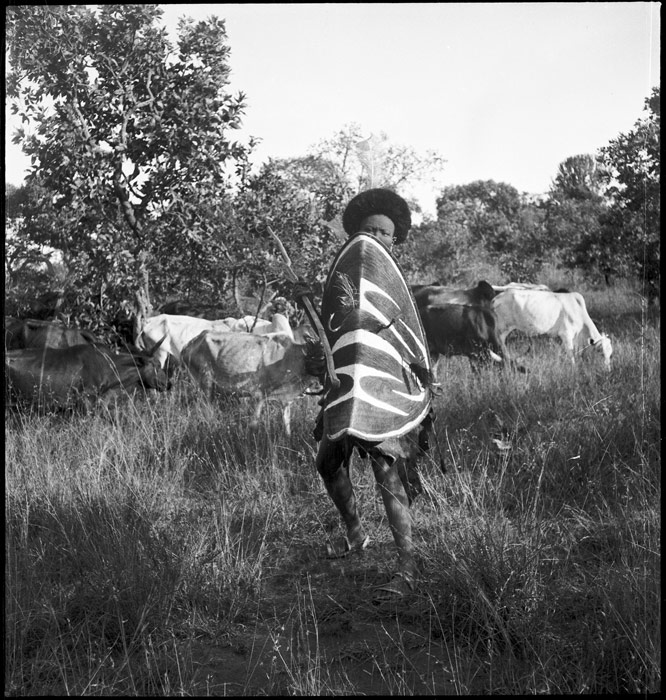
1998.349.102.1
Luo man with shield and spear driving cattle while
performing funeral ceremony of tero buru
Evans-Pritchard, 1936
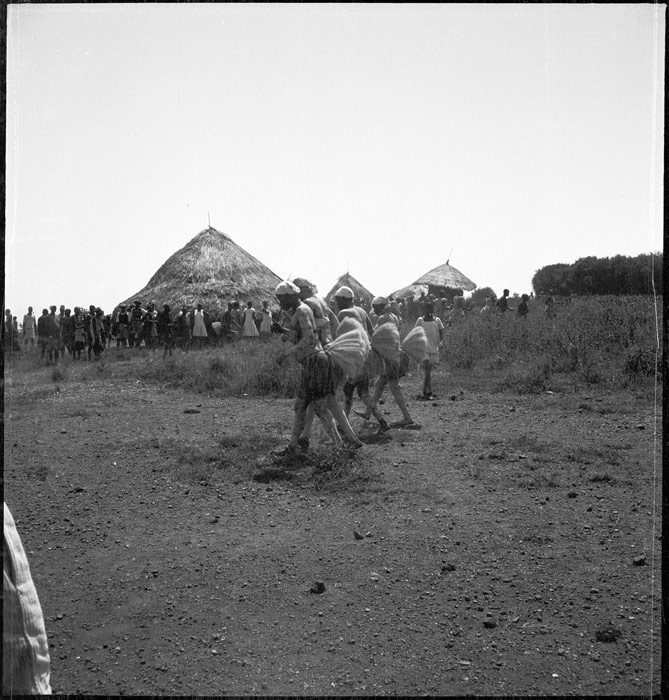
1998.349.42.1
Luo women wearing dancing waist skirts ( chieno/olemo )
returning to the home of a deceased person
during the funeral ceremony of tero buru
Evans-Pritchard, 1936
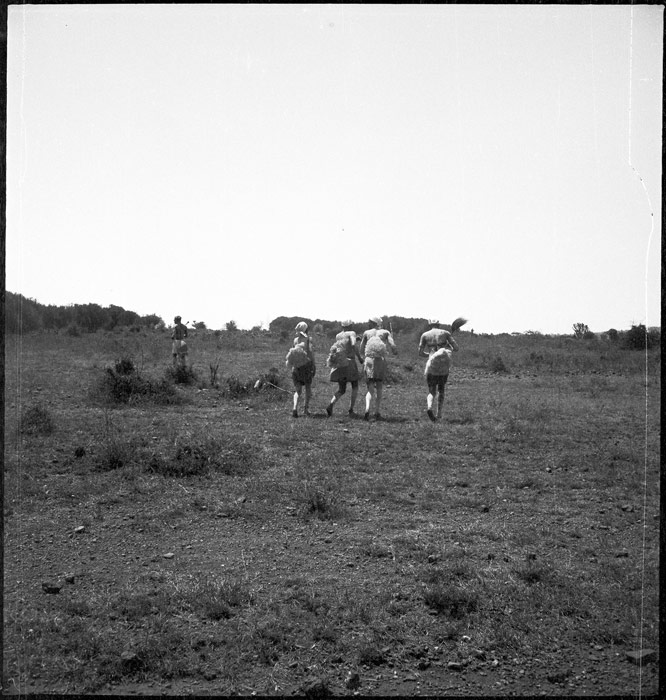
1998.349.65.1
Luo women wearing dancing waist skirts ( chieno/olemo )
returning to the home of a deceased person
during the funeral ceremony of tero buru
Evans-Pritchard, 1936
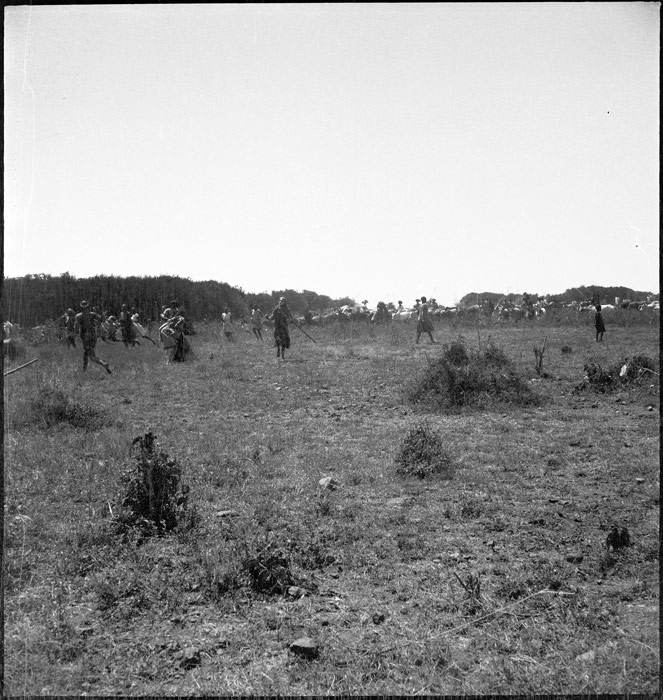
1998.349.203.1
Luo men and women returning to the home of
the deceased, driving cattle and performing
gestures to drive away death in tero buru ceremony
Evans-Pritchard, 1936
During the wedding ceremony of a first wife ( mikayi ), she would be presented with a headdress called ligisa . This was fitted and purchased for her by her brother-in-law and presented on the wedding day by the first wife of the brother-in-law. In future this headdress would always be worn by her on family occasions and when visiting her married daughters.
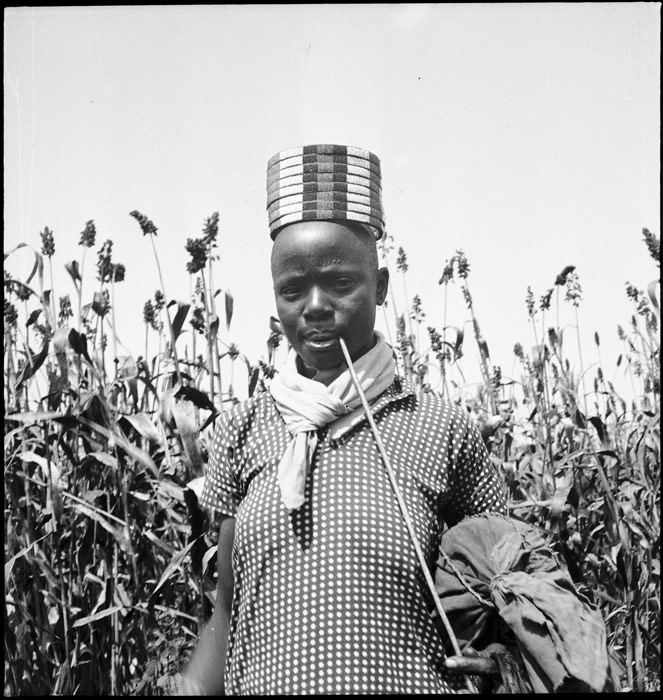
1998.349.81.1
A Luo woman from Lenya Gangu Village in Alego/Ugenya
wearing her marriage ceremonial headdress (ligisa )
Evans-Pritchard, 1936